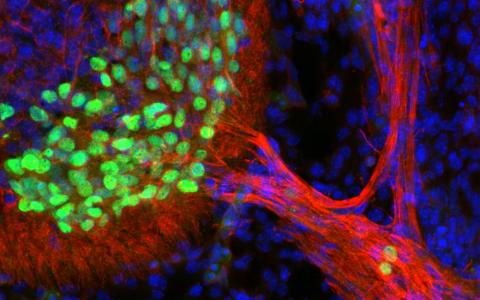Migration of neurons and subsequent growth of axons to their correct targets are crucial steps in neural circuit assembly during development. Spinal motor neurons face unique challenges during wiring, as their cell bodies reside in the central nervous system, but their axons project to various targets in the body periphery.
A team of researchers led by Professor Alexander Jaworski has identified multiple essential functions for the neuronal cell surface protein TAG-1 in motor neuron development, including anchoring migratory cell bodies in the neural tube and guiding nascent axons after exit from the spinal cord.
Their project further investigates the role of TAG-1 in motor neuron wiring. Biochemical, cell biological, genetic, and behavioral approaches are combined to understand the molecular mechanisms underlying TAG-1’s remarkable multifunctionality and elucidate its importance for motor circuit assembly and motor performance.
